Miner on the Future of Higher Education
CEO James Miner speaks to ENR about the effects of COVID-19
 Sasaki
Sasaki
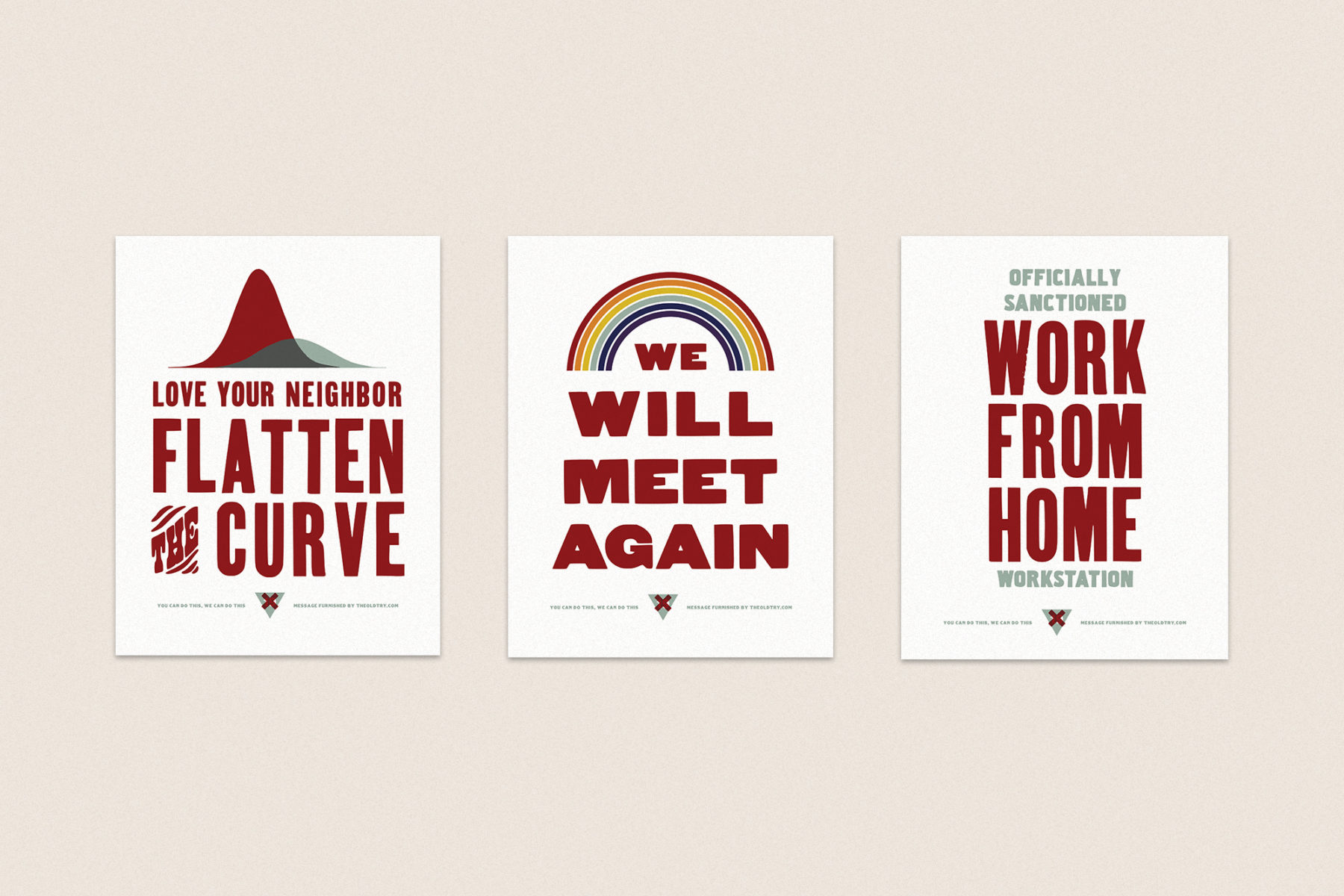
Sasaki’s CEO, James Miner, reflects on Sasaki’s evolving response to the COVID-19 pandemic and lessons learned.
James Miner: This has probably been the hardest thing for designers to adapt to, especially at a place like Sasaki that thrives on collaboration. However, there are a number of new platforms (Slack and Miro, for example) that have made it easier to collaborate remotely. Teams have also figured out some work-arounds for collaborative sketch sessions and pin-ups that have kept the creative energy flowing.
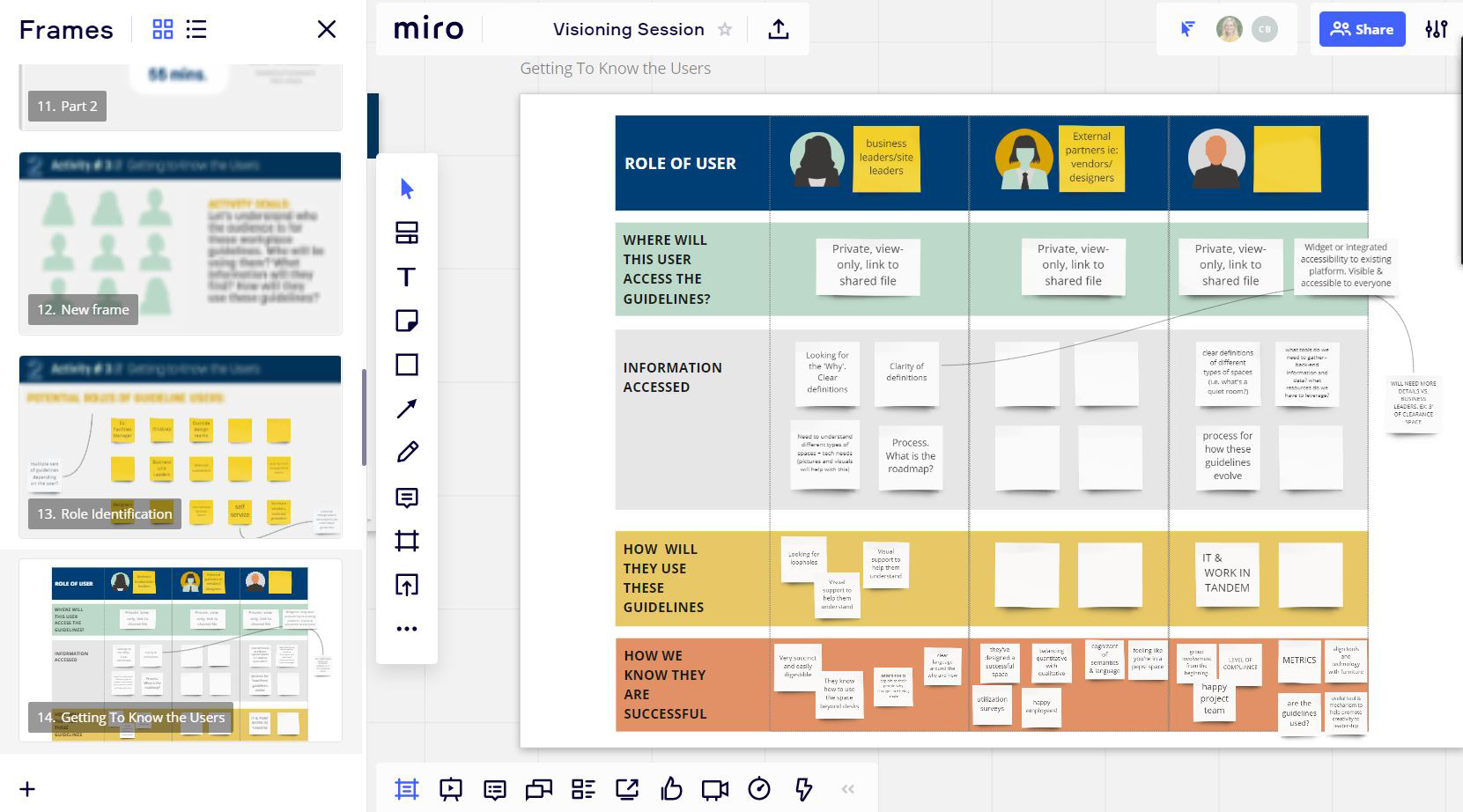
Miro is an “online collaborative whiteboarding platform” that enables virtual team interaction. The in-house Data & Design Tools team developed the above custom tool to enable live-time, remote engagement with image cards.
That being said, these technological workarounds are probably not going to completely replace in-person, hands-on work. I believe we will all learn valuable lessons about our ability to successfully work remotely that, in turn, will enable us to strike a better work-life balance in a post-COVID world,. After the pandemic is over, I imagine most of us will find a hybrid between remote and in-person work, rather than making a wholesale shift to remote working.
I think it is important to keep in mind that we are not going to have to work from home or stay 6 feet apart wearing masks forever. We can, however, learn new, healthier habits that we can take into the future.
Designers are creative problem solvers, and right now we need creative solutions to many of the challenges that COVID-19 has introduced.
Due to the breadth of our interdisciplinary practice, Sasaki is uniquely positioned to provide innovative ideas to help revive our economy as the pandemic slowly loosens its grip on our daily lives. Some firms are focused on workplace design, but don’t have much to say about public transit, which will be essential to getting workers to and from their offices. Sasaki has opinions and expertise on both.
Other firms may have experience working in higher education, but have little depth in applying technology to support the different modes of learning required if in-person classes cannot resume in the near future. Sasaki is well-poised to leverage and adapt our vast campus planning portfolio with new advances being made with our design technology team to provide colleges and universities much-needed advice as they adapt to the “new normal.”
And yet other firms may specialize in the design of open spaces, but have not thought through the many issues around equity and access to parks that are only being exacerbated in the age of social distancing. Sasaki has been working to understand and work through these issues long before COVID-19 came about. So, right now it’s not about individual designers being able to solve individual design problems – it’s about system thinking, and that is what Sasaki does best.
It’s interesting to go back in time and realize that even though Sasaki has a Shanghai office and had some advance knowledge of COVID-19 and the measures required to contain it, the switch to remote work still felt rather abrupt. I think this is because the coordinated response by the Chinese government meant everyone there was doing the same thing. Here in the U.S., we were hearing about the disease rapidly spreading in the Pacific Northwest, then the emergence of the disease in New York City, then the now infamous Biogen conference in Cambridge, MA, and before we knew it, schools in Massachusetts were being closed. But as an employer, we had no guidance or advice on what we should do from the City, State, or Federal government, so we made the call ourselves to close the office on March 13th. Since then, all levels of government have disagreed on how to manage the crisis, and the impacts of this uncoordinated response have varied across different geographies across the country. The most frequently used word to describe the past 10 weeks have been “uncertain.”
With that in mind, I felt it was important to have one thing that everyone could count on, every day. And that thing was to write an email at roughly the same time each day to the entire office. Initially, the goal was to provide critical updates on how we would transition to remote working and coordinate efforts for people to get what they needed to set up their home work spaces. That quickly evolved to people sharing their own “WFH” setups with comical images of pets and children—now central features of everyone’s workspace. We all started using Zoom backgrounds to hide the mess, clutter, bad art, or hidden spaces that we had carved out for working. But now, the filters are off, the hoodies are on, and our culture is back.
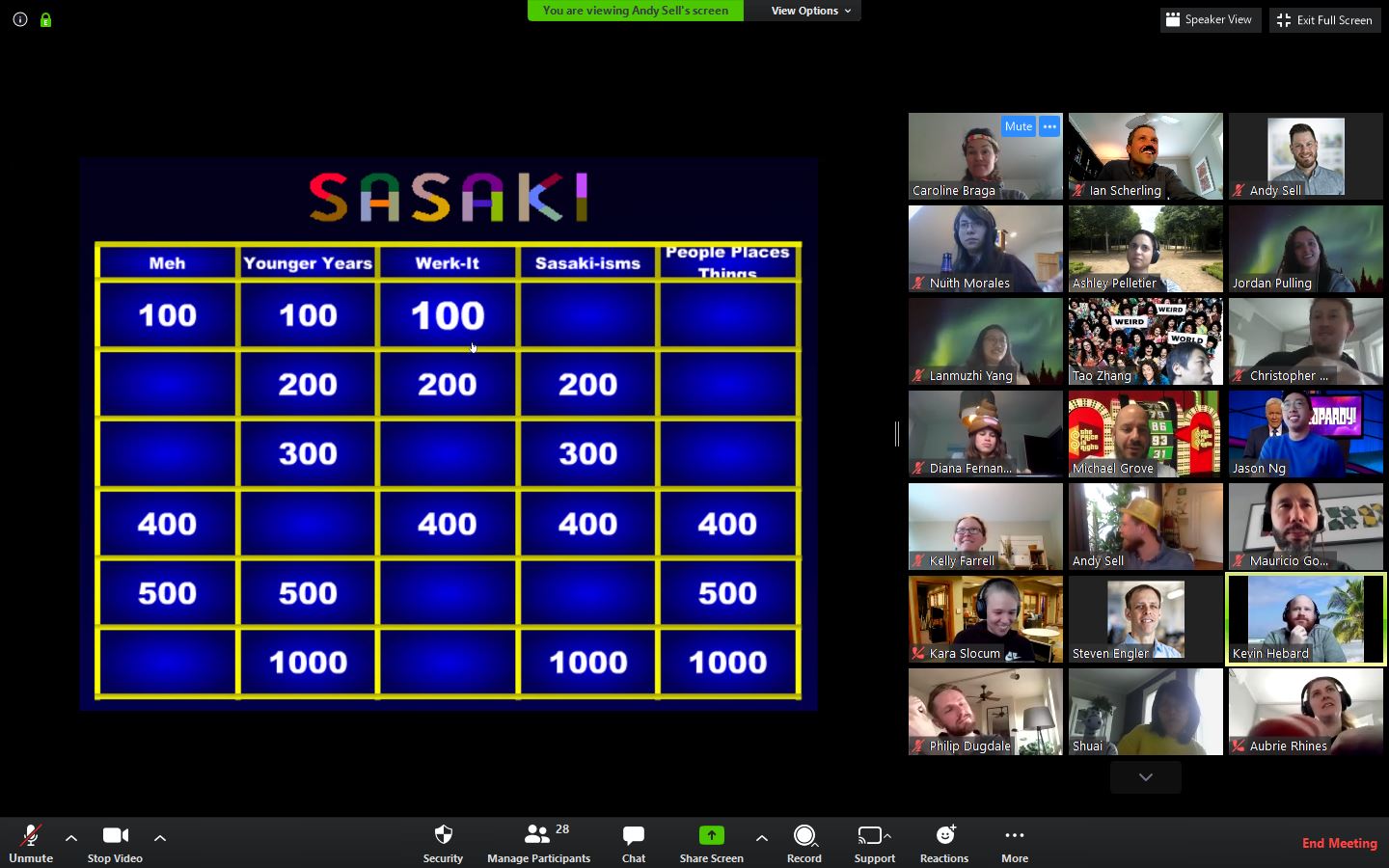
A virtual social for the landscape architecture and civil engineering discipline featured a game of Sasaki Jeopardy!–and some festive hats!
I am about to write my 50th all office email this week. Every day features a little bit of anxiety in preparing that message.. Sometimes I wonder, are people even reading these? Or are they getting sick of hearing from me? Fortunately, the daily emails seems to have resonated with at least a few regular contributors, who send me interesting project updates, webinars, podcasts, articles, or images that they hope I can include in my message. It’s turned into a mix of relevant office updates and Sasaki culture—and it’s become another way we can stay connected during this isolating time.
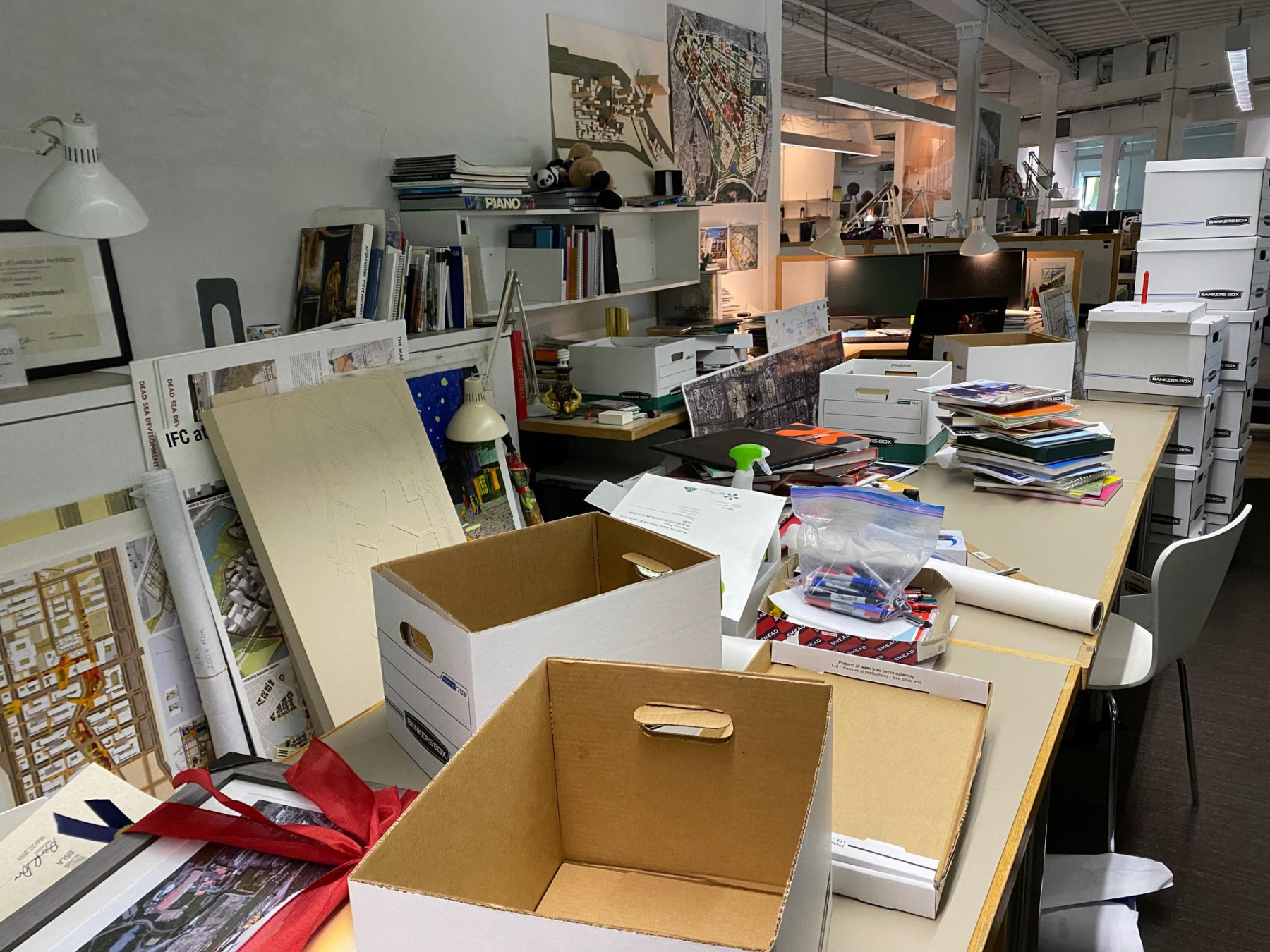
In one of Miner’s daily emails, he shared a big event in the office: in preparation for making all surfaces easily disinfect-able, one of the firm’s principals returned to reorganize their desk.
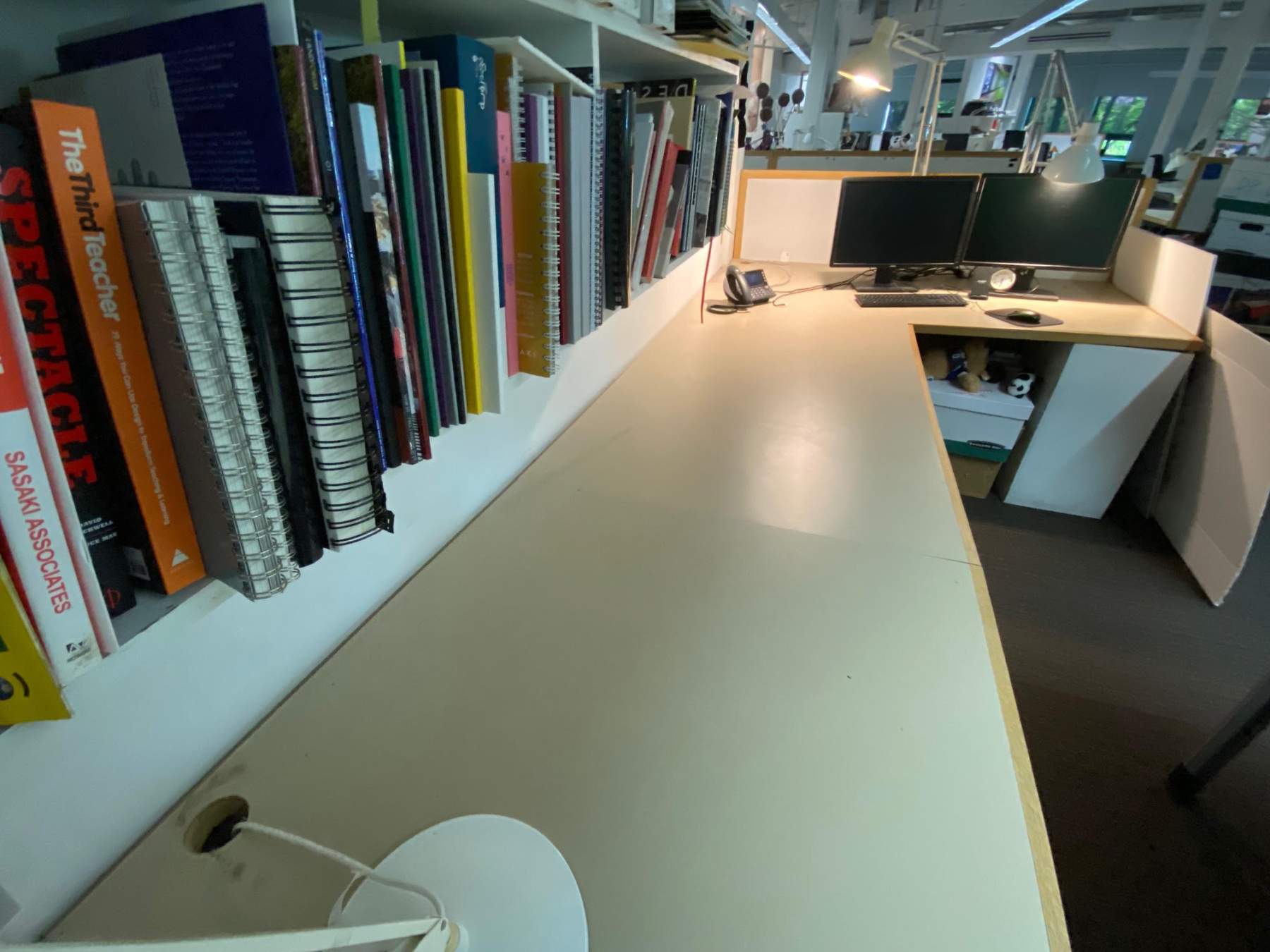
The next day, Miner shared important updates on protocols around the “new normal” for working safely in the office, and closed the email with the finished product!
Perhaps the most important thing I have come to realize is that our collective way of working pre-COVID was not sustainable in so many ways.
The amount of travel alone, and its associated impacts on the environment, clearly were not necessary. We will have business travel again, but I expect broader adoption of remote worksessions, saving in-person meetings for only those occasions that truly require it.
The fact that we all adhered strictly to the same workday schedule also seems somewhat foolish in hindsight…why spend all that time in rush-hour traffic when we could simply alter our time in the office and balance it with remote working to spread out the commute during the day? I hope we can hang onto these perspectives well into the future.
Cover photo via Old Try
CEO James Miner speaks to ENR about the effects of COVID-19
Interior design principal Liz von Goeler offers thoughts on how the world can return to the workplace
Landscape architects play a vital role in fighting pandemics at their source